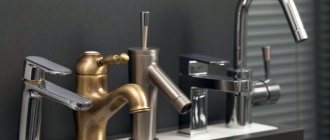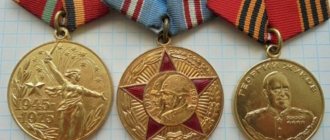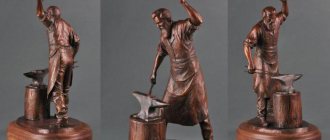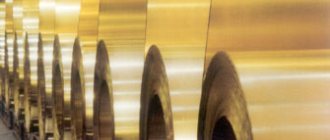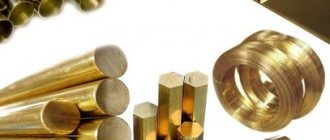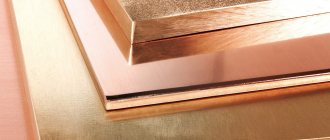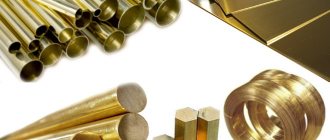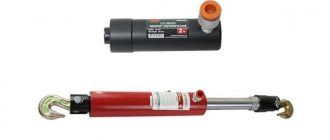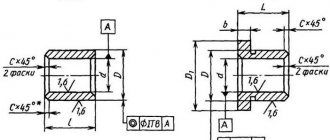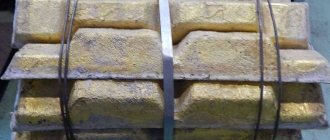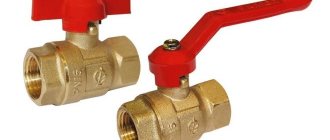Bronze bushings and caprolon sliding bushings, rear beam bearing
When trying to replace the needle bearings of the rear beam, an alternative option is usually to consider plain bearings - bushings. The material used for sliding bushings is plastic or non-ferrous metal.
One of the few plastic options that they are trying to use for rear beam bushings is caprolon, the most interesting is caprolon with graphite filling, caprolon rear beam bushings, you can buy them on the page at the link.
This material has many modifications that are more or less suitable for use as plain bearings.
Read more in an article about the material caprolon, which will help you navigate this modern and promising material.
Caprolon bushings and pulleys are used in various mechanisms, wheels and rollers for carts, conveyors, and conveyors. Caprolon is a polymer used as an antifriction material that perfectly replaces other materials in plain bearings and other high-friction units. This material has a low coefficient of friction on metal and is resistant to wear.
In addition to caprolon, in some cases, fluoroplastic can be used as a sliding bearing material . This material has a low coefficient of friction and can be processed well on traditional metal cutting equipment.
The coefficient of friction of fluoroplastic-4 on steel is only 0.04 - this is a very low and good indicator, however, this value will be maintained under certain conditions:
- Cleanliness and roughness of sliding surfaces.
- Surface movement speed
- Cooling
Provided that the sliding speed does not exceed 0.66 m/min, the friction coefficient will be 0.04. But it is enough to increase the sliding speed and the friction coefficient increases by 2-3 times and does not decrease as the sliding speed decreases.
This occurs due to the fact that with increasing sliding speed and insufficient cooling, the surfaces heat up and undergo irreversible changes. This effect is also facilitated by the low thermal conductivity of fluoroplastic-4.
In order for the surface to lose its original properties, 100 passes are enough at an excessive sliding speed.
The use of fluoroplastic-4 as a material for sliding bearings is hampered by “cold flow”, low hardness and thermal conductivity.
Modifications of fluoroplastic are used as a material for sliding bearings.
By filling fluoroplastic with various powdered fillers (molybdenum disulfide, coke, carbon fiber, glass fiber), it is possible to some extent to reduce the manifestations of inconvenient properties.
Bronze bushings are also used as a sliding bearing, including instead of a needle bearing for the rear beam. Different grades of bronze are suitable to varying degrees for the manufacture of plain bearings.
Special grades of bronze have long been successfully used for the manufacture of sleeves for sliding bearings, but in some areas of application, over the last 30 years, caprolon has been successfully used, displacing bronze. The corresponding grades of caprolon, despite the low strength indicators, are more attractive because have a lower friction coefficient than bronze.
You can compare the characteristics and properties of caprolon and bronze in the table.
Comparative table of properties: caprolon, bronze, fluoroplastic IndicatormeasurementCaprolonBronze
| Density | g/cm3 | 1,15-1,16 | 7,5-8,9 | 2,2 |
| Brinell hardness | MPa | 13-15 | 65-95 | 3-6 |
| Tensile strength | kgf/cm2 | 900-950 | 1500-2800 | 200-380 |
| Compressive strength | kgf/cm2 | 1000-1100 | 1500-2800 | 120-150 |
| Elongation at break | % | 6-20 | 3-8 | 3-4 |
| Coef. linear expansion by 1 C at temperatures from -60 C to +50 C | coefficient | 6.6-9.8xE-5 | 1.8xE-5 | 8-25xE-5 |
| Coef. friction friction on steel in lubricant | coefficient | 0,06-0,08 | 0,1-0,15 | 0,02 |
| Coef. sliding friction on steel without lubrication | coefficient | 0,1-0,2 | 0,2-0,3 | 0,04 |
Comparing fluoroplastic, caprolon and bronze as materials for the sleeve bearings of the rear beam lever, it can be noted that fluoroplastic and caprolon bushings are more convenient for installation due to the fact that they are less susceptible to distortions and jamming. In addition, if the bushing rotates inside the lever during operation, caprolon and fluoroplastic will cause less damage to the seating surface of the lever.
Bronze bushings are more durable. You also need to take into account that bronze, as a material, is more common and accessible. At the same time, when buying caprolon or fluoroplastic secondhand, it will be difficult for a non-specialist to distinguish it from other plastic. Beware of fakes!!!
Sliding bushings in place of the rear beam needle bearings Table of materials for the manufacture of rear beam bushings. Comparative characteristics
htm page, 13 kB
Rear beam bushing
A bronze or caprolon bushing for the rear beam of Peugeot, Citroen, Samand is used to extend the service life. They are trying to solve this problem in various ways.
It is known that even a high-quality rear beam axle will not be able to work for a long time if its surface wears out a damaged needle bearing. It is the rear beam bearings that receive a significant share of complaints, generally addressed to the rear beam.
There are cases when a bearing of a famous brand required replacement after a mileage of 50,000 km.
Sometimes they try to install something else in place of needle bearings. The problem with this replacement is that the needle bearing of the rear beam of Peugeot, Citroen, Samand is of a specific design and small in size. The specificity of the design is that this bearing does not have an internal race and the needle rollers run along the surface of the rear beam axis.
The rollers are very thin and therefore the height of the bearing itself is very small. There are two such bearings on each side. One bearing is installed on the outer edge of the axle and is completely closed at one end, the other is installed on the axle, closer to the center of the car and has an oil seal.
The closed end, outer and inner bearing seal prevent water from entering the middle of the assembly.
In place of the needle bearing of the rear beam of Peugeot, Citroen, Samand, it is difficult to find a worthy replacement without major changes to the entire assembly and maintaining the quality characteristics of the suspension.
However, one of the alternatives to a needle bearing is a sliding bushing, which can be used as sliding bearings; you can buy rear beam bushings for Peugeot, Citroen, Samand here by following the link. In technology, under certain conditions, structures with plain bearings made of special materials are often used.
In order to make such a bushing, you need to decide on two main parameters: the material of the bushing and the dimensions of the bushing . At first glance, the task is not difficult; at second glance, there is something to think about; at third glance, dilemmas appear.
The most commonly used caprolon bushing of the rear beam with graphite filling, which, compared to bronze bushings, has a more favorable friction coefficient, despite the low hardness that bronze distinguishes.
Using bushings as plain bearings, instead of a needle bearing for the rear beam arm, has its advantages and disadvantages:
Advantages:
- rear beam bushing made of caprolon and bronze are not afraid of moisture
- in case of destruction, less dangerous for the surface of the seat of the rear beam lever
- Possibility of use as a temporary measure, if it is impossible to replace the pins, rear beam axles. Read more in the article urgent measures .
Flaws:
- lower coefficient of friction
- low hardness (caprolon compared to bronze)
- increase in suspension stiffness
- risk of counterfeit. Incorrectly or deliberately, in order to reduce the cost, incorrectly selected material for making the bushing
Find out about some of the difficulties in the article dimensions of sliding bushings for the rear beam of Peugeot, Citroen, Samand. Rear beam bushings, in the form of plain bearings, can be an alternative to a needle bearing in some circumstances as a temporary replacement.
From the forum https://cncmasterkit.ru/
- Few people know how to work with caprolon in enterprises, and it would seem that an experienced turner or milling operator should “get his hands on it”, since cutting modes, viscosity and machinability, and the processing method itself are very different from other materials. Usually, at first, if someone has not worked with him before, until he understands “what this caprolon wants,” he makes a lot of mistakes. So if you order, then either ask whether the specialist has worked with this material or not, or give some material “to try.”
- Thank you. Another question. I read somewhere that caprolon loses its geometry over time. Those. If the turner selects the diameter of the hole for the shaft, then after a while the bushing will “bite”. Is it so? Maybe someone actually used caprolon bushings?
- During processing there is no need to allow heating , because The hole being bored at the initial moment (while the tool and the workpiece are cold) will be close to the required diameter, but closer to the end of processing the diameter will be smaller due to expansion due to temperature. In general, we observe the cutting modes and the “rest” modes of the material
From Chipmaker:
Good afternoon, gentlemen, do you think caprolan will work instead of bronze for bushings in the gearbox of a lathe? How will it work? Has anyone done it?
- Caprolon may not have enough strength and may crush. If there is no bronze, you can either use anti-friction cast iron or fill it with babbitt (B83, B88) - depending on the working conditions.
- Bearing bushings made of caprolon love to grab the shaft, expanding when heated. Moreover, the process develops, so to speak, with positive feedback: it rubs more and more, heats up more and more... And so on until the caprolon jams, or the caprolon begins to melt, or the bushing rotates.
- What kind of bushing is this and where is it located? More details please. The shafts in the box usually have bearings. I saw the truth in the gear milling gear on bushings, but there is a low-speed shaft, it rotates very slowly. In general, if you put caprolon on a loaded high-speed shaft and there are gears on it, they will come to an end, the bushing will be crushed and the shaft dangling will eat the gear tooth.
- We used black (with graphite) caprolon instead of bronze bushings (about 100 mm in diameter) on the 2N135 drill quill (and after all, there was once a Bronze Age, but probably the prices were just as exorbitant...) A gap was left of 5 acres, after three months The quill began to jam - the caprolon became saturated with oil and swelled. They scraped it again, and since then there have been no comments. So you can use it, but control it at first.
From the chipmaker:
Does this ugliness have any kind of limit at all, or is it an endless process? I went through my windshield wiper trapezoid, replaced the bronze bushings with caprolon bushings and made new stainless steel axles for them. After pressing, the bushings were reamed, and the axles were adjusted so that they move in the bushings with light finger pressure.
When assembling, I anointed it with silicone grease for plastic and rubber. After about a month, the wipers began to move so hard that the rod sitting on the ball pin began to fly off the drive. I took everything off and took it apart. It turned out that the lubricant became like glue and stuck together the axles and bushings. I wiped the bushings and axles with solvent and put them back together dry - they went in easily.
After about half a year or a year, the thrust began to fall off again due to too much force of rotation of the axles in the bushings. I disassembled and went through the bushings with a reamer, the chips were removed. The axles came in easily again. About half a year has passed since then and the cravings began to slip again.
When the draft is gone, that is, when the trapezoid of the wipers is free from the drive, I somehow move them with my hand using the wipers themselves.
How long will caprolon grow? I don’t want to make bronze bushings, I think it’s better from non-metal. PTFE is probably too soft for these purposes?
discussion
Design of sliding supports
Sliding bearings are calculated in a simplified way based on load (specific):
р=F/d*L, where
F – force acting on the support;
d – journal diameter;
L – sleeve length.
The value of the product of specific load and speed (circumferential) is also determined:
pv=(π*d*n/60000)*p,
where d is the diameter of the trunnion in mm;
n – shaft revolutions in 1/min.
The obtained values should not exceed the permissible values given in the reference books. This calculation corresponds to semi-fluid and boundary friction in the bearing.
Metal plain bearings dimensions table, which is given in GOST 1978-81, can serve as the main reference material for design.
When designing, it is also important to maintain the required ratio of the length and diameter of the sleeve.
Key factors are the shape, dimensions, location of the lubricant supply grooves. They are placed in the unloaded area of the liner.
Recommended fits for plain bearings:
- to ensure liquid lubrication mode H8/e8, H7/e8 at high speeds in large electric motors and turbogenerators;
- H7/f7 for light loads;
- H7/d8 at high speeds but low pressure;
- H7/c8 and H8/c9 with significant temperature changes.
Sliding bearings, due to their advantages, are widely used in mechanical engineering. They are used for high and low shaft speeds, under particularly high and low loads, for large diameter shafts, during shocks and vibrations. Moreover, with the advent of new materials and lubricants, the scope of application of sliding bearings is only expanding. They are installed in turbines, pumps, internal combustion engines, centrifuges, gearboxes, rolling mills, packaging, dosing and other equipment.
| Attention Bearing Buyers Dear customers, send your questions and requests for the purchase of bearings and components by email or call now: Delivery of bearings throughout the Russian Federation and abroad. Bearing catalog on the website |
Attention Bearing Buyers
Dear customers, send your questions and requests for the purchase of bearings and components by email or call now: +7 [email protected] Delivery of bearings in the Russian Federation and abroad. Bearing catalog on the website
themechanic.ru
Oil supply pockets for liquid lubrication of liners with collars
Dimensions, mm
Oil supply pockets, grooves and holes should not be placed in the loaded area of the bearing, either on the friction surface or on the contact surface
| d | With | r | r1 = l1 | t | l |
| 40-50 | 17 | 1 4 | 3 | 1 ,5 | 6 |
| 50-60 | 20 | 18 | 3 | 1,5 | 6 |
| 70-80 | 27 | 24 | 4 | 2 | 8 |
| 90-100 | 34 | 32 | 5 | 2 | 10 |
| 105-120 | 40 | 40 | 5 | 2 | 10 |
| 125 | 50 | 50 | 6 | 2,5 | 12 |
Bronze bushing: why choose it
Are you trying to maximize the service life of equipment components or mechanisms? The problem will be solved by the use of wear-resistant parts. Bronze bushings can withstand high dynamic loads and are reliable at an affordable cost.
bushing manufacturing
Bronze bushings are high-tech assembly consumables that are characterized by good ductility. The parts are used in equipment subject to significant mechanical stress and ensure the safety of the main parts of the structure.
The intensity of the work process does not lead to loss of properties. A cheap analogue is bushings made of polymers, but their scope of application remains narrow, and such products cannot withstand extreme loads at all. Spare parts made of bronze do not crack. The main alloy is inert towards environments of any aggressiveness.
Consequently, the scope of application of the part is wide.
By the way:
the properties of bronze were valued by our ancestors.
It is known that the Celts in the 8th century. BC e. bronze components of the harness were used. At that time, horse harness was one of the most loaded structures. Such luxury with inclusions of expensive metal was available only to the elite of that time. Features and Benefits
Bronze bushing
durable, but not as hard as steel. In conditions of increased friction, it will be more durable, wears out more slowly, and needs to be replaced much less frequently, which automatically extends the life of the equipment. Additional benefits:
- Corrosion resistance. Bronze does not oxidize upon contact with air or a special environment - salt water, process fluids.
- The low coefficient of friction of the material guarantees excellent anti-friction properties and low adhesion. The part is not able to adhere to the materials of the contacting parts when in close contact.
- The load is distributed evenly over the contact area, abrasive particles are drawn deeper, away from the contact boundaries. This property protects steel from wear.
- Increased heat capacity and thermal conductivity of products.
Long service life lengthens scheduled maintenance intervals. By purchasing such a part, you end up saving. Valuable, expensive equipment does not forgive careless handling.
Popular types of bushings where they are used
Models made of alloys are considered in demand at the moment:
- BrOTsS (with tin-zinc-lead additive), grade 555 - the softest.
- BrOF (plus tin, phosphorus).
- BrAZHN, with the addition of nickel. Often used for repairing marine vessels.
- BrOS (tin-lead type). The parts are indispensable in high-temperature environments; they remain operational when heated to 500°C.
The classic use of bushings is sliding bearings for turbines, rolling mills, pumps, machine tools, gearboxes, and generators.
Did you know that previously there was a material containing arsenic, but it was not widespread? Such objects were discovered in the Maikop mound, dated to the 4th millennium BC. e.
In ancient Rome, copper was mixed with zinc ore to create blanks for creating decent tools. Two hundred years ago the British received brass with pure zinc. Thus began the era of counterfeiting gold items.
Bushing production - methods
Bronze bushings
presented in the form of a cylinder with a central hole. They are classified taking into account the grade of the original metal and wall thickness. Parts are produced in several ways:
- Centrifugal casting. This method is considered progressive and economical. The final product is highly dense and has no air cavities. The metal is poured into a rotating container, crystallization occurs under high pressure.
- Casting in a chill mold. A special collapsible mold opens after the alloy has cooled and the workpiece is removed. Hardening occurs due to natural gravity. The density of the alloy will be lower than that of the previous version. The advantage of such production is the ability to flawlessly produce parts of complex shapes.
- By cutting. Applicable to bronzes of the BrOTsS type for workpieces that require subsequent processing on machines. Experts note the high cost of the method, since significant allowances are required. An undoubted advantage is the production of components with non-standard parameters.
Product prices depend on the brand, size, manufacturer and number of products in the batch. Original article » Bronze bushing: why choose it
«
Anti-friction cast irons
Antifriction cast irons are used as cheap substitutes for bronzes: gray AChK with flake graphite, high-strength AChK with globular graphite, malleable AChK with flake graphite and cuprous FM (Table 30).
The disadvantages of antifriction cast irons are fragility and high hardness (HB 160-250), which excludes the possibility of self-breaking in. Cast iron bearings are sensitive to misalignment, causing high edge pressures.
Cast iron bearings are used with shafts of high surface hardness (> HRC 55). Soft antifriction cast irons (AChS-3, AChV-2, AChK-2) can work in tandem with normalized or improved steels (HRС 25-35) under light loads.
Recommended oil supply pockets for liquid lubrication of bushings
Dimensions, mm
Oil supply pockets, grooves and holes should not be placed in the loaded area of the bearing, either on the friction surface or on the contact surface
| d | With | r | t | l |
| 40-50 | 17 | 14 | 1,5 | 3 |
| 55-60 | 20 | 18 | ||
| 67-80 | 27 | 24 | 2 | 4 |
| 85-100 | 34 | 32 | 5 | |
| 105-120 | 40 | 40 | 2 | 5 |
| 125 | 50 | 50 | 2,5 | 6 |
Oil supply pockets for liquid lubrication of smooth bearings
Dimensions, mm
Oil supply pockets, grooves and holes should not be placed in the loaded area of the bearing, either on the friction surface or on the contact surface.
| d | With | r | r1 | t | l |
| 40-50 | 17 | 14 | 3 | 1,5 | 6 |
| 50-60 | 20 | 18 | |||
| 70-80 | 27 | 24 | 4 | 2 | 8 |
| 90-100 | 34 | 32 | 5 | 10 | |
| 105-120 | 40 | 40 | 5 | 2,0 | 10 |
| 125 | 50 | 50 | 6 | 2,5 | 12 |
Brass fasteners
Brass fasteners include bolts and screws, washers and nuts, anchors, screws, studs, cotter pins, rivets and final nails.
Brass bolts DIN 933 are used for:
- Assembly of furniture and iron structures, road works (with a semicircular head and a square head).
- Production of machine tools, devices, construction (folding with round eye).
- Aviation industry and nuclear power (full thread + hex head).
- Mechanical engineering and assembly of electrical devices (6-point head + nut included).
- Production of high-precision components and assemblies (precision for reamer holes).
Brass screws can be set, decorative, pressure and furniture with a press washer. Head shape – square, semicircular, countersunk and semi-concealed, flat, cylindrical (including knurled) and hemispherical; slot - straight, Phillips or internal hexagon.
The range of DIN 439 brass nuts includes hexagon fasteners (regular and reduced height); round (with/without knurling and a hole for a pin); high-cap (protects the thread from corrosion and damage, and the user from injury); wing (for quick-release connections with rectangular petals) and locking (nylon ring to prevent spontaneous loosening during vibration). Nuts are used in combination with bolts, screws, studs and other threaded parts to form reliable connections.
Round brass washers DIN 125 protect the surfaces of mating parts from damage during tightening and increase the contact area of the threaded parts. There are flat-shaped products of subsequent designs - accuracy class A (with chamfer), with a reduced/increased outer diameter.
For fastening covers, railings, handrails, suspended ceilings, shelves, cornices and trays, cable ducts, utilities, control boxes, boilers, furniture panels, handles, fastenings, brass drive-in anchors with a split collet - ALC Collet - are used. This part is inserted into the previously made hole and opened there by screwing in a screw, pin or bolt.
When assembling wooden structures or furniture, and finishing work, it is convenient to use brass screws. They come in different cut lengths, the shape of the cap is semicircular, secret and semi-secret. There is a design with a pressure washer. Spline – straight or Phillips.
To mount air ducts, fire extinguishing systems, gas and water pipes on ceilings or walls, to tighten different structures and parts together, you need strong brass studs DIN 975. All these products have full threads, a full choice of diameter and length.
Brass has good anti-friction properties and perfectly resists friction. Therefore, brass products are used for the production of rotation units operated at high speeds and small axial/circular loads. Such a part is a cotter pin that limits the sliding or rotation of bushings, nuts and couplings.
Fixation of the liner in the housing according to GOST 11611-82
Dimensions, mm
Inserts with an adapter sleeve in the housing
Recess in the base of the housing for an adapter sleeve
| Shaft diameter | b | r | h |
| 25 | 1,0 | 3,5 | 3,6 |
| 28 | |||
| 32 | |||
| 36 | |||
| 40 | 1,8 | 3,5 | 3,6 |
| 45 | |||
| 50 | |||
| 55 | |||
| 63 | |||
| 70 | 2,5 | 5,0 | 4,2 |
| 80 | |||
| 90 | |||
| 100 | |||
| 110 | |||
| 125 |
